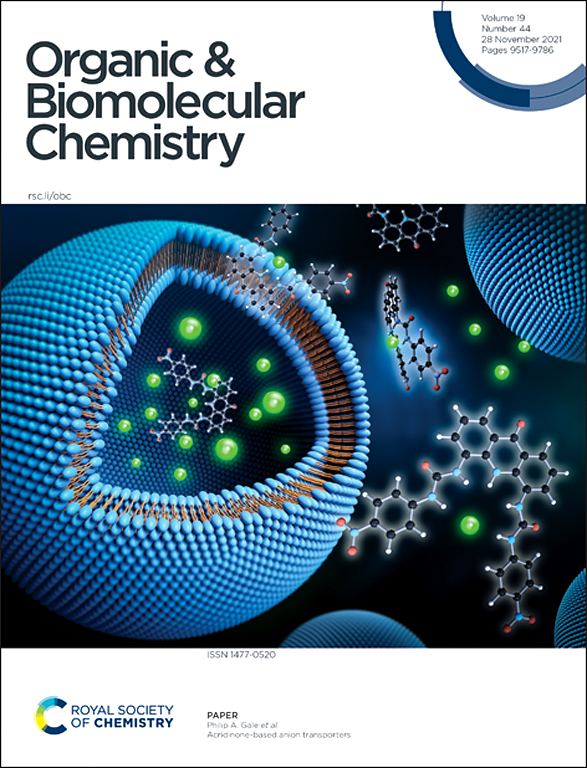Lys-CQD催化合成硫脲,酰胺和甲酰胺化合物使用可再生和竞争性的原料。
IF 2.7
3区 化学
Q1 CHEMISTRY, ORGANIC
引用次数: 0
摘要
在化学合成中使用可再生和廉价的前体是非常有益的,但由于其惰性化学和需要复杂的催化剂来提高其反应性,因此具有挑战性。在此,我们证明了赖氨酸修饰的碳量子点(Lys-CQD)催化剂是一种很有前途的催化剂,可以激活各种羰基源。最初,在一锅三步反应中,Lys-CQD促进苯胺与CS2的反应合成硫脲。反应在氯化胆碱/尿素深共熔溶剂(ChCl/ udes)中进行,该溶剂也用作含尿素前驱体。此外,在苯胺与DMF的反应中,Lys-CQD被证明是合成甲酰胺产物的有效催化剂。值得注意的是,DMF同时作为溶剂和羰基化前体。最后,利用lys - cqd催化多种胺与醋酸乙烯酯的反应,获得了多种酰胺的高收率,包括含酰胺类药物,如乙酯。这些结果突出了Lys-CQD作为有机合成的清洁催化剂的强大潜力,特别是在激活非活性羰基前体方面。本文章由计算机程序翻译,如有差异,请以英文原文为准。
Lys-CQD catalyzed synthesis of thiourea, amide, and formamide compounds using renewable and competitive feedstocks†
The use of renewable and cheap precursors in chemical synthesis is highly beneficial, yet challenging due to their inert chemistry and the need for complex catalysts to enhance their reactivity. Herein, we demonstrate that a lysine-modified carbon quantum dot (Lys-CQD) catalyst is a promising catalyst for activating various carbonyl sources. Initially, in a one-pot 3-step reaction, Lys-CQD promoted the reaction of anilines with CS2 toward the synthesis of thioureas. The reaction was performed in a choline chloride/urea deep eutectic solvent (ChCl/U DES), which also served as a urea-bearing precursor. Moreover, in the reaction of anilines with DMF, Lys-CQD proved to be a potent catalyst for synthesizing formamide products. Notably, DMF functioned as both the solvent and the carbonylation precursor. Lastly, the Lys-CQD-catalyzed reaction of various amines with vinyl acetate was exploited, furnishing different amides with high yields, including amide-containing drugs such as acedoben. The results highlight the strong potential of Lys-CQD as a clean catalyst for organic synthesis, particularly in activating unreactive carbonyl precursors.
求助全文
通过发布文献求助,成功后即可免费获取论文全文。
去求助
来源期刊

Organic & Biomolecular Chemistry
化学-有机化学
CiteScore
5.50
自引率
9.40%
发文量
1056
审稿时长
1.3 months
期刊介绍:
Organic & Biomolecular Chemistry is an international journal using integrated research in chemistry-organic chemistry. Founded in 2003 by the Royal Society of Chemistry, the journal is published in Semimonthly issues and has been indexed by SCIE, a leading international database. The journal focuses on the key research and cutting-edge progress in the field of chemistry-organic chemistry, publishes and reports the research results in this field in a timely manner, and is committed to becoming a window and platform for rapid academic exchanges among peers in this field. The journal's impact factor in 2023 is 2.9, and its CiteScore is 5.5.
 求助内容:
求助内容: 应助结果提醒方式:
应助结果提醒方式:


